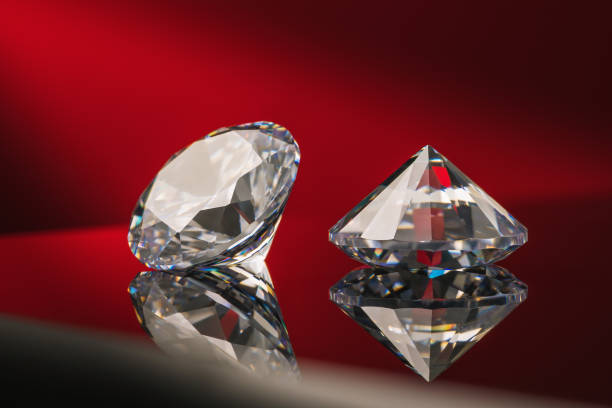
White Sapphires vs. Diamonds vs. Lab-Grown Diamonds: A Comprehensive Comparison
When it comes to choosing a gemstone for fine jewelry, the decision often comes down to personal taste, budget, and values. Among the most popular options are white sapphires, natural diamonds, and lab-grown diamonds. Each of these stones has distinct characteristics, making them suitable for different needs and preferences. In this article, we’ll explore the differences between these three gemstones, helping you make an informed decision when purchasing jewelry.
White Sapphires: A Subtle Sparkle
White sapphires are a natural gemstone belonging to the corundum family. They are often chosen as a more affordable alternative to diamonds. While white sapphires are not as brilliantly sparkling as diamonds, they offer a clear and bright appearance with a somewhat muted shine. The overall effect is elegant, though not as intense in brilliance or fire. The hardness of white sapphires vs diamonds is also notable, scoring 9 on the Mohs scale of hardness, which makes them highly durable and suitable for everyday wear. They are more resistant to scratches than most gemstones, but slightly more prone to damage than diamonds.
The main appeal of white sapphires lies in their affordability. Compared to diamonds, they are significantly less expensive, which makes them an excellent choice for those on a budget or those seeking an alternative to diamonds without sacrificing the gemstone’s overall aesthetic. Another important factor is that sapphires, in general, tend to have fewer ethical concerns than diamonds, particularly when sourced responsibly. However, it’s always wise to check the origin of the sapphire to ensure it meets ethical standards.
Natural Diamonds: The Timeless Classic
Natural diamonds have long been the epitome of luxury, elegance, and romance. Formed over billions of years deep within the Earth’s crust under extreme pressure and temperature, diamonds are one of the rarest and most coveted gemstones in the world. They are unparalleled in their brilliance, which comes from their unique ability to refract light. This stunning brilliance is often referred to as a diamond’s “fire,” which is the dispersion of light into different colors. This feature, combined with the hardness of the diamond, which scores a perfect 10 on the Mohs scale, makes it the most durable and scratch-resistant gemstone known.
While diamonds are admired for their beauty and strength, they come with a significant cost. The rarity of natural diamonds, along with the extensive mining and extraction process, contributes to their high price. Furthermore, the environmental and ethical concerns associated with diamond mining have led many consumers to question their purchase. “Blood diamonds,” or diamonds mined in war zones and sold to finance armed conflict, have raised alarms about the ethics of buying natural diamonds. However, certified conflict-free diamonds, which guarantee ethical sourcing, are available for those who wish to ensure that their purchase does not contribute to human suffering.
Lab-Grown Diamonds: The Ethical Alternative
Lab diamonds, also known as synthetic or man-made diamonds, are an increasingly popular option. These diamonds are created in a laboratory using high-pressure, high-temperature methods or chemical vapor deposition (CVD) to replicate the conditions that form natural diamonds. Despite being grown in a lab, these diamonds are chemically, physically, and optically identical to their natural counterparts. They exhibit the same brilliance, fire, and hardness, with a Mohs rating of 10.
One of the most significant advantages of lab-grown diamonds is their affordability. Lab-grown diamonds are typically 20-40% less expensive than natural diamonds of comparable size and quality. This makes them a compelling option for those who desire the beauty and durability of diamonds without the high cost. Furthermore, lab-grown diamonds are seen as a more sustainable and ethical choice. Since they are not mined, lab-grown diamonds have a much smaller environmental footprint and avoid the ethical concerns tied to traditional diamond mining.
While lab-grown diamonds are an appealing alternative to natural diamonds, it’s important to note that not all lab-grown diamonds are created equal. Some may be produced with more environmentally harmful practices than others, so it’s essential to choose a reputable lab that adheres to ethical and sustainable practices.
Which Gemstone is Right for You?
Choosing between white sapphires, natural diamonds, and lab-grown diamonds depends largely on your individual preferences and priorities. If budget is your primary concern and you are seeking a beautiful stone without the high cost of a diamond, a white sapphire may be the perfect choice. It offers a subtle elegance and good durability, making it an excellent option for those who prefer something understated yet classy.
For those who are drawn to tradition and the timeless allure of diamonds, natural diamonds remain the pinnacle of luxury. However, it’s important to weigh the cost and ethical implications of natural diamond mining. Those who value the brilliance and durability of diamonds but want a more ethical and affordable option may find that lab-grown diamonds meet their needs. Lab-grown diamonds offer the same stunning sparkle and strength as natural diamonds, with the added benefit of a more sustainable and ethically sound process.
In the end, whether you choose a white sapphire, a natural diamond, or a lab-grown diamond, each stone brings its own beauty and significance. Your choice will reflect your personal taste, values, and the meaning you wish to assign to your jewelry.





